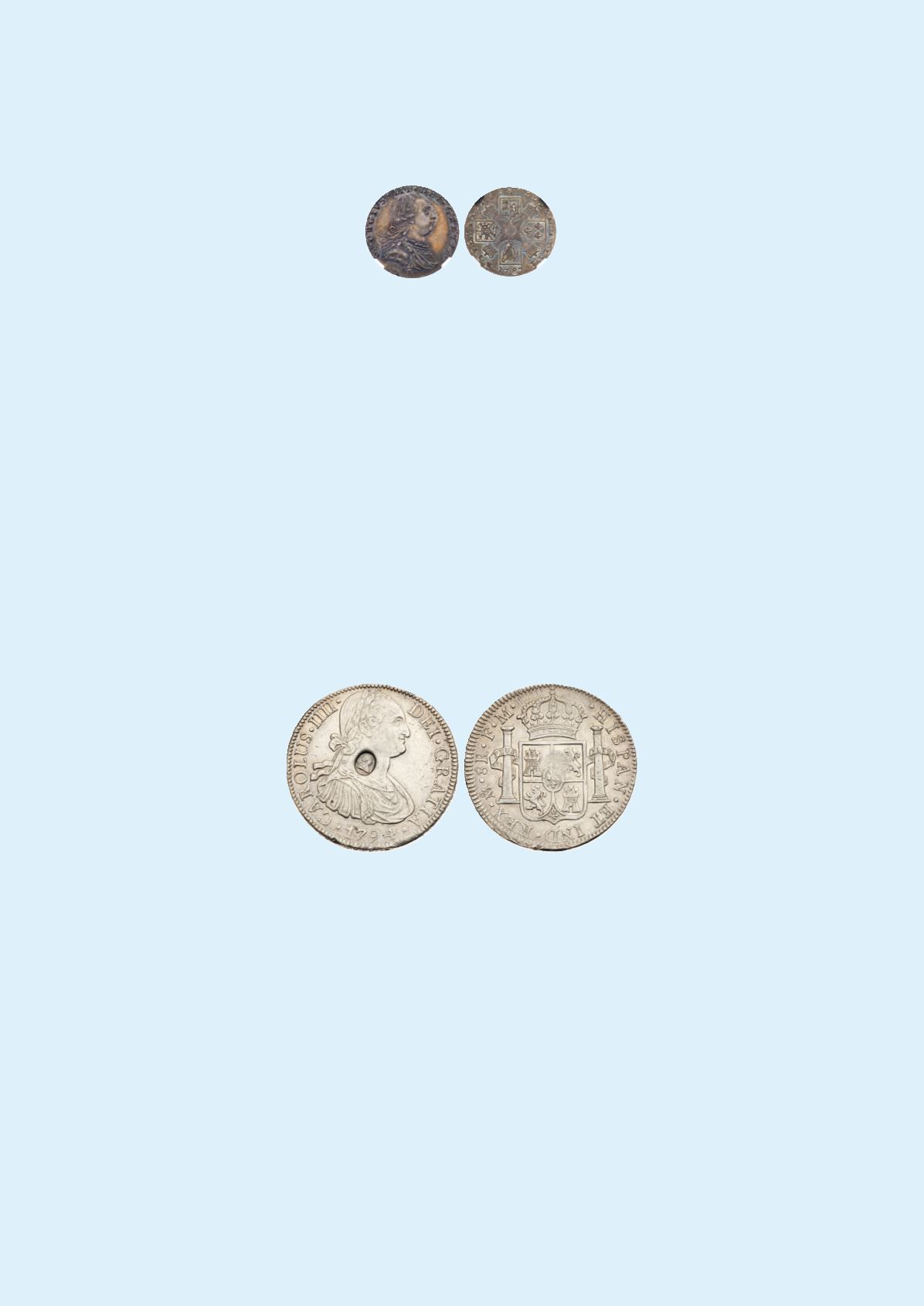

Unusual Heavy Weight Proof Silver Sixpence of King George III
George III (1760-1820), Proof silver Sixpence, 1787. Struck on a heavy flan, laureate and cuirassed bust
right, legend surrounding, GEORGIVS. III. DEI. GRATIA. Rev. large garter star at center, cruciform
emblematic shields, Hanoverian arms without hearts, crowns in angles, date at bottom, legend commences
lower left, M.B.F. ET. H. REX. F. D. B. ET L. D.
S.R.I.A.THET. E. edge plain, weight 4.82g (Bull 2189 R4;
ESC 1628 R4; S. 3748; cf KM 606.1). Slight rim imperfection flaw below bust, one nick on jaw, otherwise
practically as struck, in NGC holder graded PF 64, Pop 1; the only example graded at both services for the
type.
extremely rare.
$2,750
Ex: Purchased privately through A H Baldwin early 2006, with old dealer ticket giving perhaps a Spink Numismatic Circular
number of 93118 which would date it to pre-1920 period.
NGC certification 2722100-010.
British Oval Countermark on a Mexican Eight Reales
George III (1760-1820), oval countermark upon Spanish Eight Reales of King Charles IIII (1788-1808),
1792 FM. Struck in Mexico City, Mexico, small oval hallmark of George III right at center of obverse,
bust of Spanish King laureate and draped right, date below, legend and toothed border surrounding, CAR-
OLVS.IIII. DEI. GRATIA, Rev. crowned quartered shield of arms, pillar with ribbon motto either side
PLUS ULTRA, legend surrounding.HISPAN. ET IND. REX. M. 8R.F.M. (ESC 129; Bull 1852; S 3765A;
KM 634). Some light nicks and marks both sides, countermark almost extremely fine, host coin good very
fine.
$800
These emergency countermarked coins were struck in relation to a crisis with the silver coinage at the end of the 18th Century
where the supply of silver in commerce and for the Mint had dwindled due to the Wars in France after the Revolution in 1797.
From March 1797 the Bank of England therefore released stocks of its Spanish dollars each with an oval countermark valued
at 4s and 9d for currency. They did not really alleviate the problem of smaller change and were issued on an off with the oval
countermark until a more complex larger octagonal mark replaced them from January to May 1804, as the oval pieces were being
counterfeited. Eventually the octagonal replacements were also copied widely and the ultimate solution was to have the Soho Mint
totally overstrike the Spanish Dollars with the Bank of England design.



















